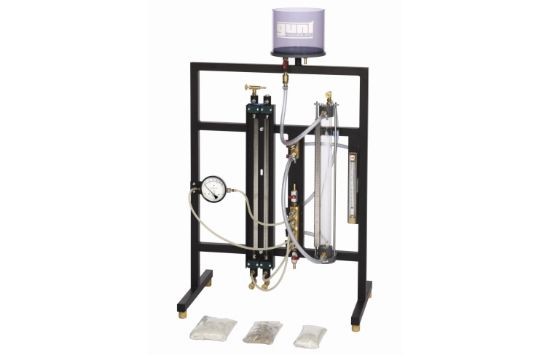Flow through particle layers is widely encountered in process engineering. In reactors, fixed and fluidised beds are subjected to through-flow by liquids and gases. The separation of solids from suspensions by cake and depth filtration is another area of application.
With CE 117 the fluid mechanic principles involved in flow through fixed beds and fluidised beds can be investigated. For the purpose, a fillable test tank made of glass is provided, through which water can be made to flow from both ends. A sintered-metal plate serves as the base for bulk solids.
Water from the laboratory water connection flows into the test tank. To investigate flow through fixed beds, the water enters the test tank from the top. It flows through the fixed bed and the sintered-metal plate and passes by way of a distributor to the outlet.
The experimental setup can be modified by means of quick-release couplings. This also enables the flow through the test tank to be reversed and fluidised beds to be investigated. The water flows upwards through the porous sintered-metal plate and the fixed bed. If the velocity of the water is less than the so-called fluidisation velocity, the flow merely passes through the fixed bed. At higher velocities a fluidised bed is formed. The water flows from the head of the test tank into an expansion tank. From there it flows into the outlet.
Regardless of the specific setup, the flow rate is adjusted by a valve and indicated by a flow meter. To determine the pressure loss via the fixed bed or fluidised bed, two manometers with differing measuring ranges are provided. The desired manometer is selected by way of valves.

